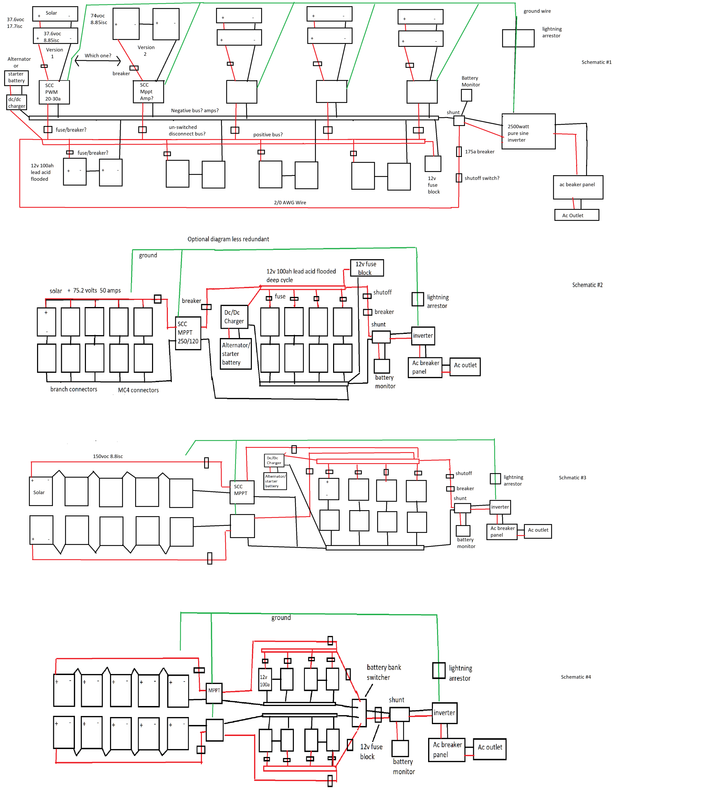Hello, my names Abel. I'm new to solar. I been watching countless videos and i feel like my diagram is almost complete. Except ill need fuses for each battery. My biggest problem is i have 10 solar panels and if i do 5 in a string i'll need a monster controller to handle all those volts. Even with 4 panels is bad. So i'm thinking of doing a 48v battery system. Would anyone please take a look at the diagram i drew in paint to see if there are any errors or things you could improve? My diagram is only 8 panels of the 10 i have because if i do strings of 3 that gives me 9. If i do 2 panels in each string ill need 5 charge controllers? My panels are voc 37.6 and isc 8.85amps. Also do Bus bars increase the amps and keep volts the same? Do i need to make sure the battery doesn't get too many amps? they are flooded 12v 100ah lead acid deep cycle batteries 240amp draw. The controllers will be mppt so ill need bigger breakers? Batteries are connected to create 4 sets of 24volts each. The charge controllers are ran in parallel. This is my first diagram i made by combining multiple diagrams. Thank you for reading!
https://i.postimg.cc/FR07bwcF/1.png
If a charge controller says it can take 150vdc is it okay to run 150 voc into it? Should i stay around 130volts so i dont add stress to it? Or can it handle 150 volts without stress?
Here is another diagram i just drew with a 48v battery bank and solar array arranged differently. This is so i dont need super big charge controllers. With the first diagram i would need charge controllers to handle 148v x.25 for temp = 185volts. Are my diagrams correct?
https://i.postimg.cc/FR07bwcF/1.png
If a charge controller says it can take 150vdc is it okay to run 150 voc into it? Should i stay around 130volts so i dont add stress to it? Or can it handle 150 volts without stress?
Here is another diagram i just drew with a 48v battery bank and solar array arranged differently. This is so i dont need super big charge controllers. With the first diagram i would need charge controllers to handle 148v x.25 for temp = 185volts. Are my diagrams correct?




